I tested TCL's QM8 4K TV, and it's the brightest TCL mini-LED set yet
TCL has been a longtime advocate for mini-LED and quantum dot tech in TVs, and the company has managed to bring both features to models that are attractively priced. The QM8 class is TCL’s flagship model for 2023, and it’s the only one to follow the previous template of combining a mini-LED backlight with an LCD panel featuring a quantum dot layer – this time in TVs with a screen size as large as 98 inches.
I recently had an opportunity to view the new TCL TVs in person, and was also provided with time to do hands-on testing of both an 85-inch QM8 series model and a step-down Q7 series TV. While the testing situation was more rushed than I would have liked, I did get a chance to make key picture quality assessments, as well as play around with some features on the new sets.
While the company’s previous flagship mini-LED TVs, the TCL 6-Series, was produced in 55-, 65-, 75-, and 85-inch screen sizes, the new QM8 series starts at 65 inches and ranges up to 98 inches. (TCL’s current XL series offers TVs with a 98-inch screen, but those models lack mini-LED backlighting.) The 85-inch model I went hands-on with is priced at $2,799.99, while the 65-inch version is $1,699. All QM8 series TVs are available now with the exception of the 98-inch model ($9,999.99), which will arrive later this year.
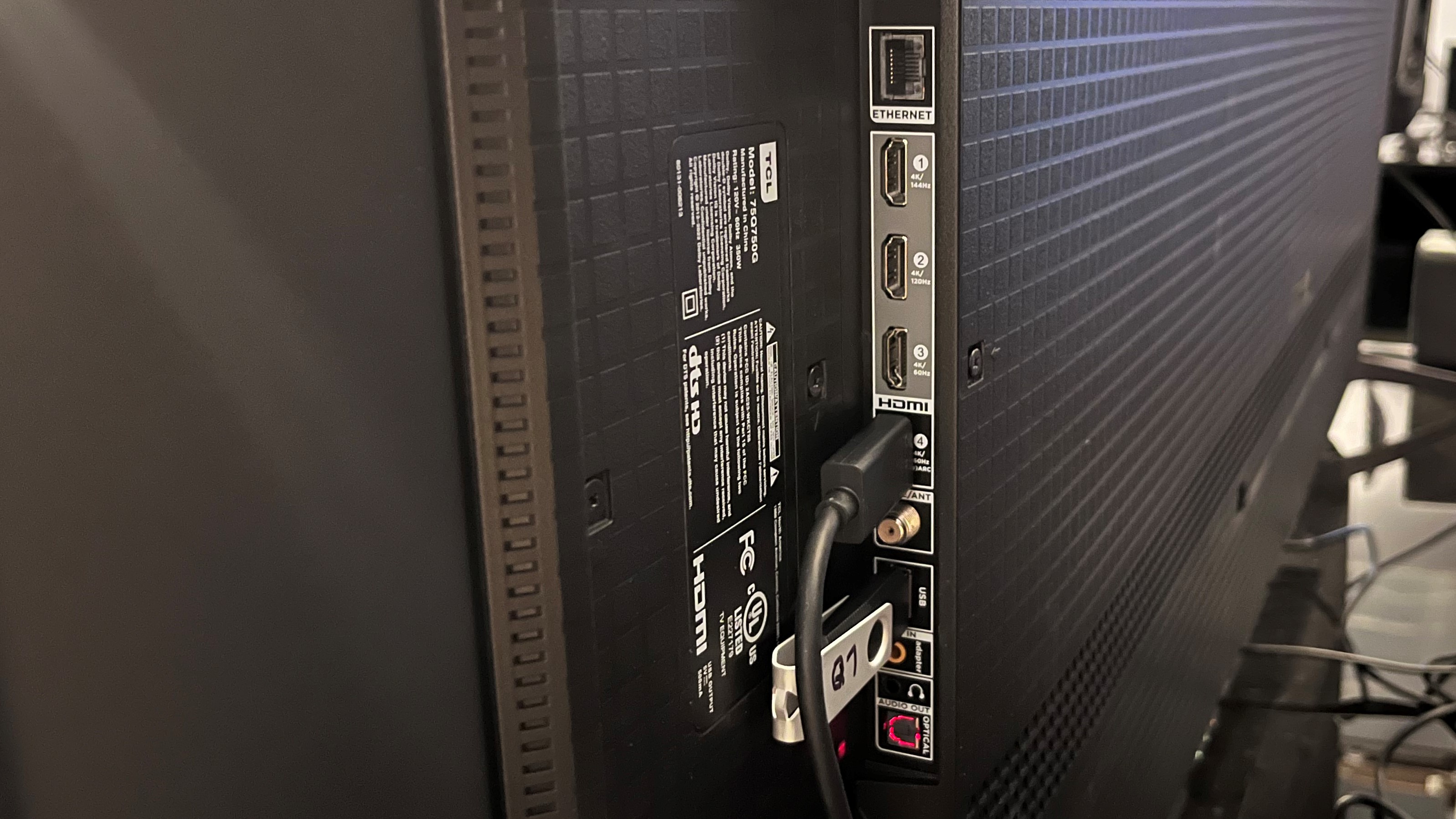
TCL’s QM8 series TVs use the Google TV smart platform for streaming and voice control. They also have the company’s latest Gen 3 AIPQ processor and support Dolby Vision IQ and HDR10+ high dynamic range. TCL’s QM8 series specs list peak brightness at 2,000 nits and the number of local dimming zones used for the Mini-LED backlight at over 2,300. They also are the only 2023 TCL TVs to feature an anti-glare screen coating.
With a native 120Hz panel, the QM8 is well-equipped for gaming, though, unlike the other picture presets, the set’s Game mode wasn’t yet finalized when I did my hands-on test. Other gaming features include ALLM, FreeSync Premium Pro, and Game Accelerator 240 for up to 240Hz VRR gaming (at 1440p).
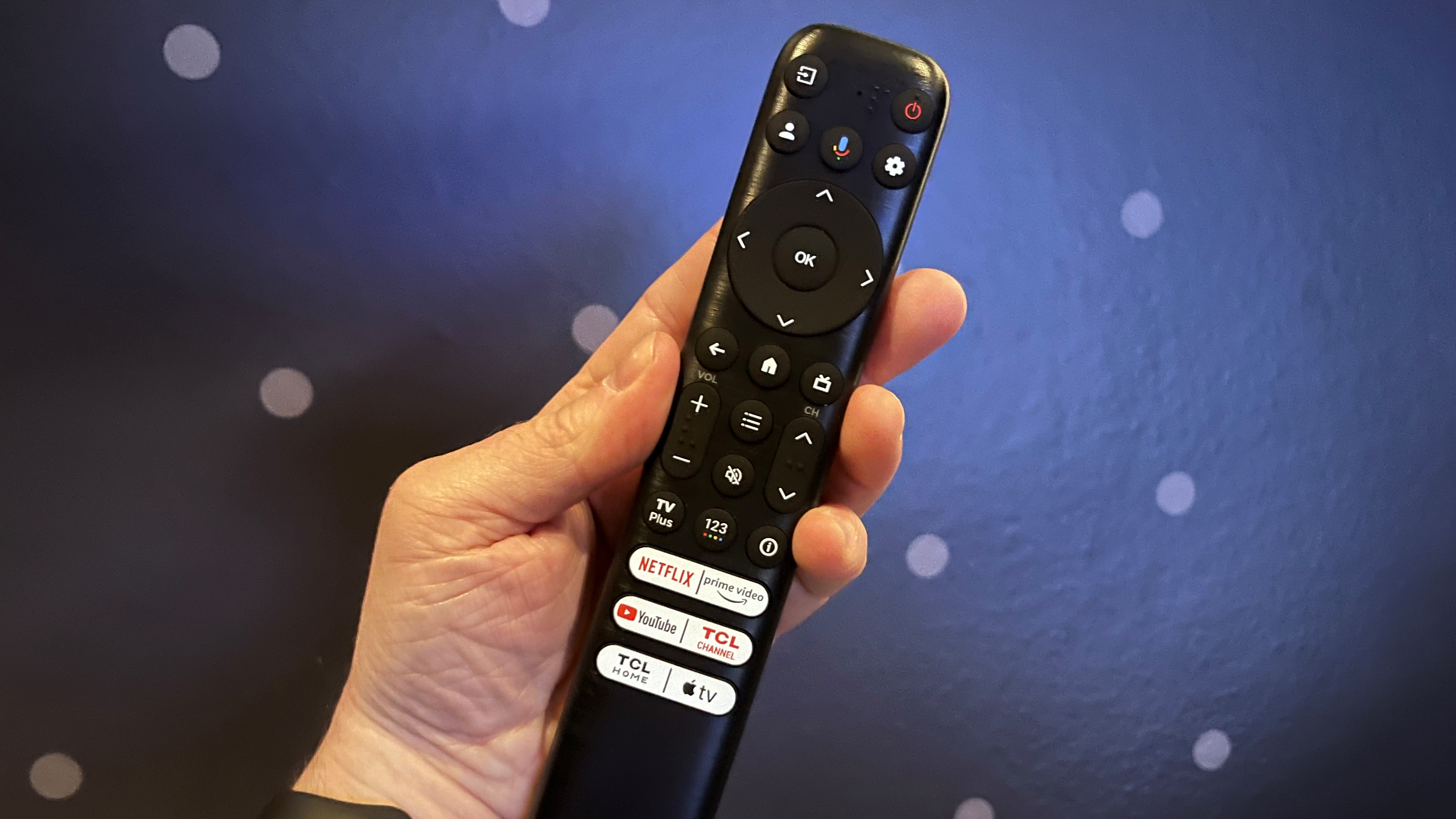
The 85-inch model I evaluated has a bezel-free design and uses a center-mounted pedestal stand that’s height adjustable. There are four HDMI inputs (including one with 4K 120Hz support and a second with 4K 144Hz support) and an antenna input for the set’s ATSC 1.0 digital TV tuner. Dolby Atmos and DTS Virtual:X audio formats are supported, and the TV has a built-in 2 x 10-watt speaker system with an additional 20 watts for a subwoofer.
QM8 class TVs also come with a backlit remote control – a rare amenity in the TV world, even for the priciest sets.
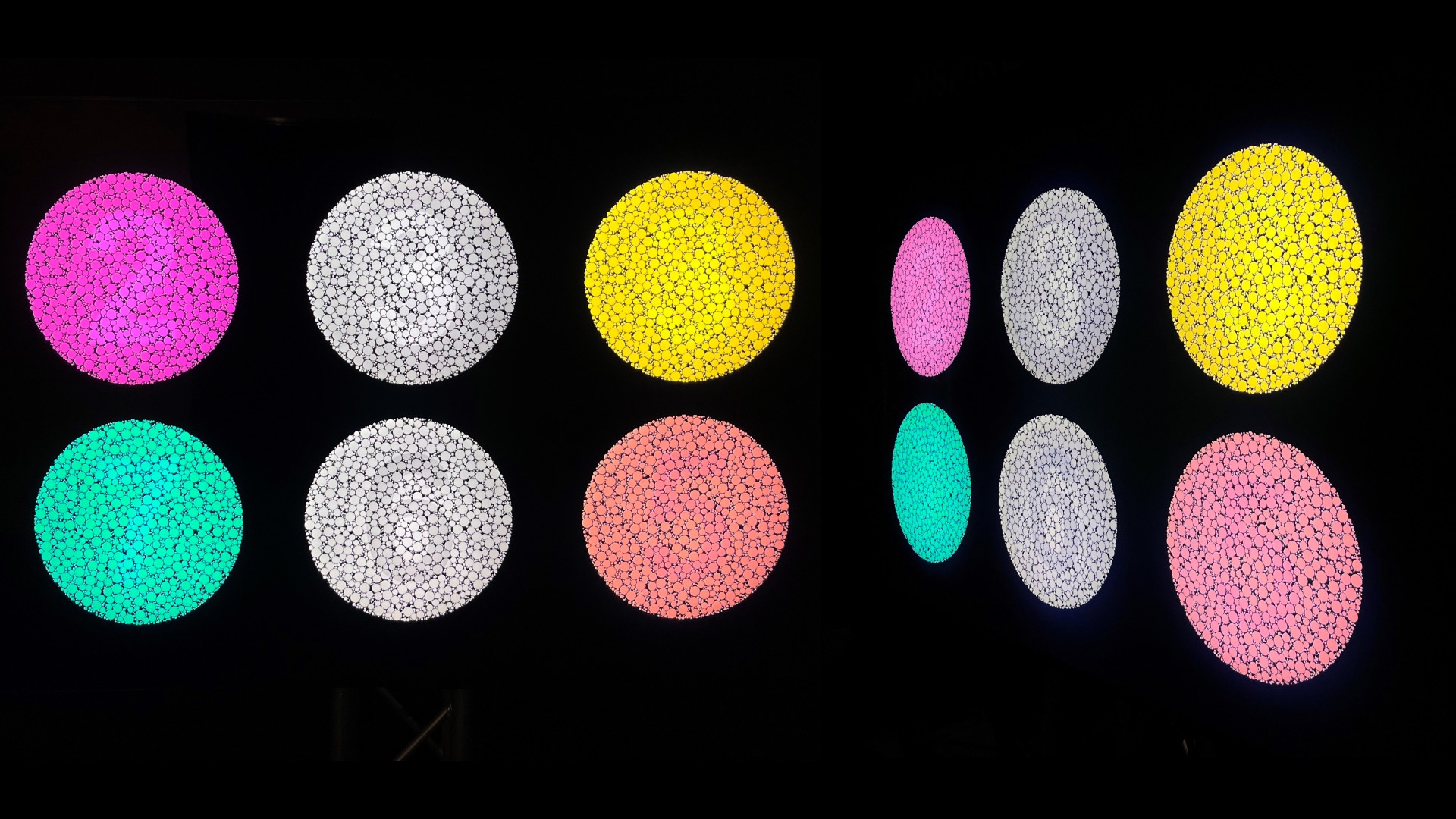
Brighter than before
As I usually do when evaluating a TV under time constraints, I went straight to the Spears & Munsil Ultra HD HDR 4K Blu-ray test disc and checked out test patterns and the visual montage section. I also used a light meter to make peak brightness measurements.
Viewed straight on, white full-screen test patterns revealed excellent brightness uniformity, but when I checked out patterns used to evaluate off-axis uniformity, contrast faded and colors looked less vivid – a typical result with many LCD-based TVs like the QM8 series. The visual montage section showed the QM8 to have only minimal backlight blooming on tough sequences like the Ferris wheel against a night sky. When I watched the disc’s starfield test sequence, I noticed a higher degree of blooming, though it wasn’t consistent at all brightness levels. It’s possible some combination of the TV’s local dimming settings would have mitigated this, but given the time limitation, I was unable to make a complete determination.
Measured on a white window pattern covering 10 percent of the screen in default Movie mode, the 85-inch UM8 hit a maximum peak brightness of 1,805 nits. While that’s less than some other top 4K TVs with a mini-LED-backlight we’ve tested such as the Samsung QN95C, it’s still an impressive result, and one that comes close to TCL’s specifications for the UM8 series. Watching other montage sequences from the Spears & Munsil disc, the TV’s high peak brightness made image highlights pop in a truly impressive manner. Combined with the deep and detailed blacks the set delivered, there was a strong sense of depth in many clips I watched.
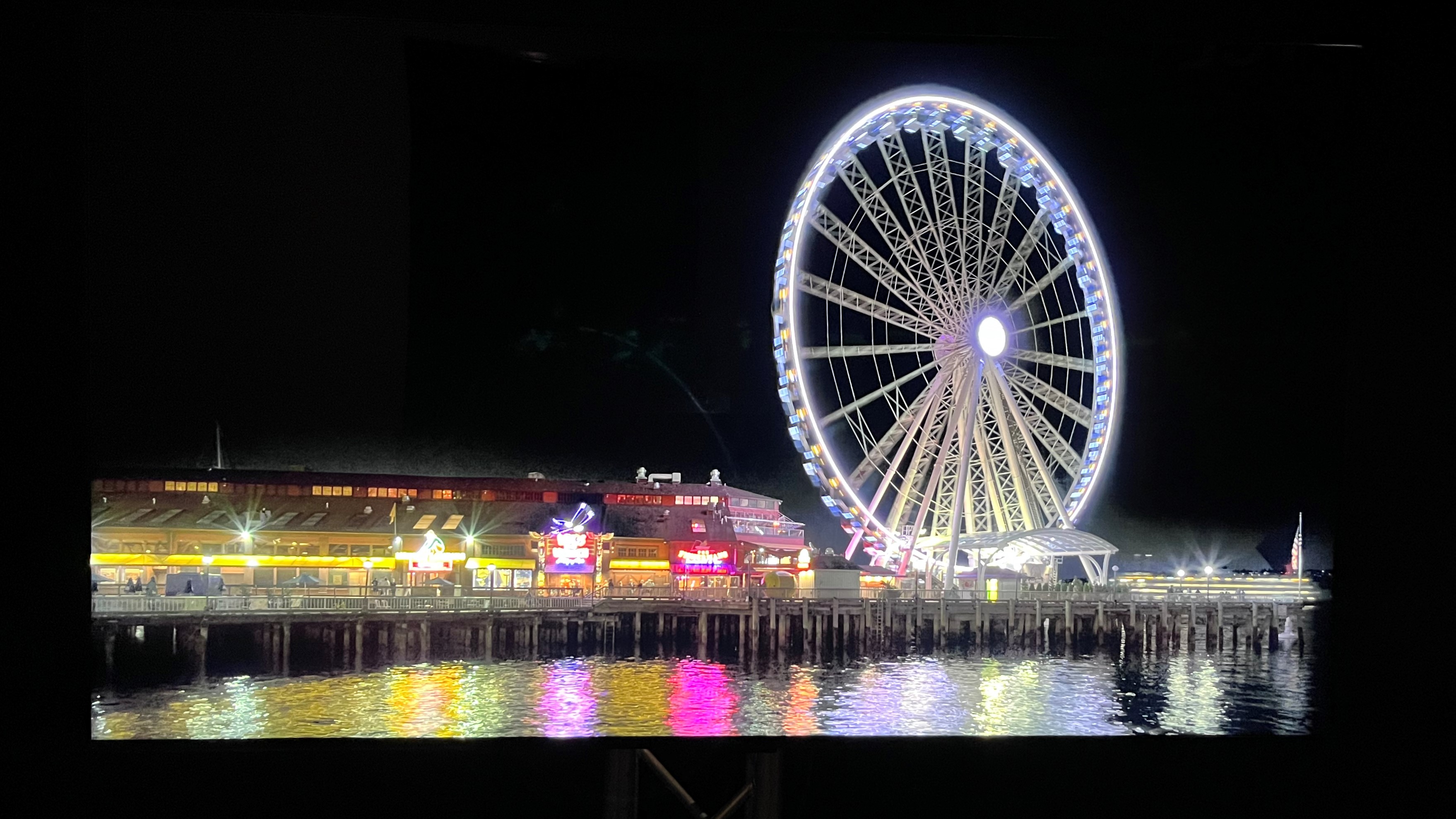
The UM8 provides separate blur and judder adjustments to minimize motion artifacts in movies, and using these I was able to create a custom setting that did so without adding a “soap opera effect” to images. Watching a scene from James Bond thriller No Time to Die where Bond (Daniel Craig) walks across a rugged landscape in the Italian mountains as the camera pans along, the image quality noticeably improved when I applied my adjustments, going from blurry to completely solid.
To test the performance of the QM8’s Gen 3 AIPQ processor, I watched a scene from Dune where Paul walks with Lady Jessica following an interrogation by the Reverend Mother. The misty environment in this sequence was rendered with minimal noise; even on an 85-inch screen, I saw no evidence of banding or over-enhancement. The processor also delivered HDR highlights in a detailed manner, the colors looked rich yet clean, and deep shadows came across as a solid black.
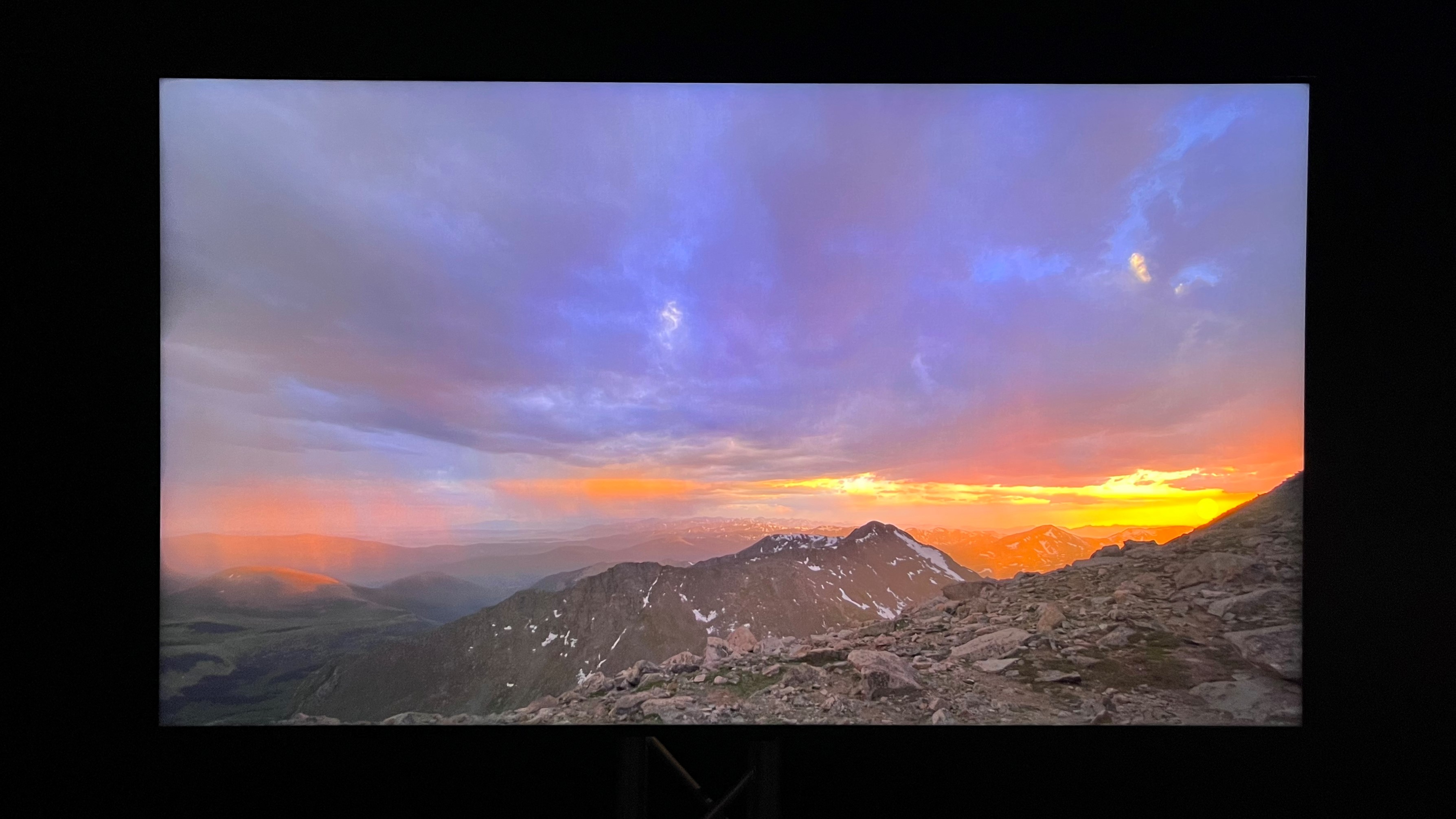
At $2,799.99, the TCL QM8 is an impressive deal for a big-screen TV capable of delivering a high level of HDR brightness. Its local dimming processing is also effective, though I’ll need to give both that feature and others a more thorough workout in a future full review. But I walked away from my hands-on test of TCL’s feature-packed mini-LED flagship with a positive overall impression.
Considering how much more you’ll have to pay for a similarly featured set from a competing TV brand with the same screen size – Samsung's $4,499 85-inch QN90C, for instance – TCL appears to have something quite special on its hands with the QM8.
Shopping for a new big-screen TV? Check out our guide to the best 85-inch TVs to find other options.
0 comments:
Post a Comment